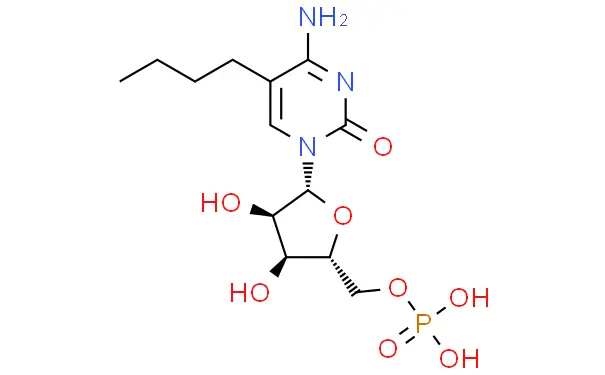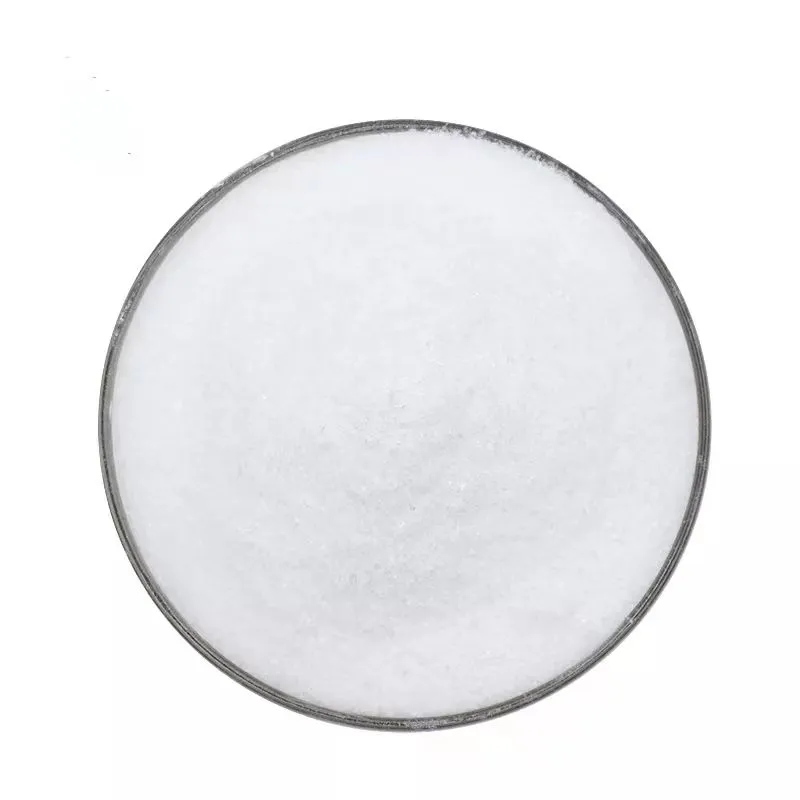5 Cytidylic Acid: A Vital Molecule for DNA Synthesis
5 Cytidylic acid, also known as cytidine monophosphate (CMP), is a crucial nucleotide that plays an indispensable role in the synthesis and replication of DNA. This molecular building block is essential for life itself, contributing to the genetic code that defines every living organism. In this comprehensive exploration, we'll delve into the significance of 5 cytidylic acid, its functions in DNA replication, gene expression, and its potential implications in genetic disorders.
Why 5 Cytidylic Acid is Essential for DNA Replication?

DNA replication is a fundamental process in all living organisms, ensuring the accurate transmission of genetic information from one generation to the next. 5 Cytidylic acid serves as a pivotal component in this intricate mechanism.
At its core, 5 cytidylic acid is one of the four nucleotides that comprise DNA. It pairs specifically with guanine, forming a critical base pair in the DNA double helix structure. During DNA replication, 5 cytidylic acid is incorporated into the newly synthesized DNA strand, ensuring the faithful reproduction of the genetic code.
The process of DNA replication is catalyzed by DNA polymerase, an enzyme that requires a supply of nucleotides, including 5 cytidylic acid, to build the new DNA strand. Without an adequate supply of 5 cytidylic acid, DNA replication would be incomplete or erroneous, potentially leading to mutations or cell death.
Moreover, 5 cytidylic acid contributes to the stability of the DNA molecule. The hydrogen bonds formed between cytosine (the base in 5 cytidylic acid) and guanine are stronger than those between adenine and thymine, providing additional stability to GC-rich regions of DNA. This enhanced stability is particularly important in regulatory regions of genes, where precise control of gene expression is crucial.
Interestingly, 5 cytidylic acid also plays a role in epigenetic modifications. The cytosine in 5 cytidylic acid can be methylated, forming 5-methylcytosine. This modification is a key epigenetic mark that influences gene expression without altering the DNA sequence itself. The presence or absence of these methyl groups can significantly impact cellular processes and development.
How 5 Cytidylic Acid Affects Gene Expression and Repair?

Beyond its role in DNA replication, 5 cytidylic acid exerts profound influences on gene expression and DNA repair mechanisms, further underscoring its importance in cellular function.
In terms of gene expression, the distribution of 5 cytidylic acid within a gene sequence can impact the efficiency of transcription. Regions rich in cytosine and guanine, known as CpG islands, are often found near the promoter regions of genes. These CpG-rich areas can influence the binding of transcription factors and other regulatory proteins, thereby modulating gene expression.
The methylation status of cytosine in 5 cytidylic acid is a critical epigenetic factor in gene regulation. Hypermethylation of CpG islands in promoter regions is generally associated with gene silencing, while hypomethylation is often linked to increased gene expression. This epigenetic control mechanism allows for dynamic regulation of gene activity in response to environmental factors or developmental cues.
5 Cytidylic acid also plays a crucial role in RNA synthesis. During transcription, cytidine triphosphate (CTP), derived from 5 cytidylic acid, is incorporated into the growing RNA chain. The abundance and distribution of cytidine in mRNA can influence its stability, translation efficiency, and even its secondary structure, all of which impact gene expression at the post-transcriptional level.
In the context of DNA repair, 5 cytidylic acid is involved in several mechanisms that maintain genomic integrity. One notable example is the base excision repair pathway, which corrects small base lesions in DNA. When cytosine is deaminated to uracil, a common form of DNA damage, the repair machinery recognizes this error and replaces the uracil with the correct cytosine, derived from 5 cytidylic acid.
Furthermore, 5 cytidylic acid participates in the nucleotide excision repair pathway, which addresses more extensive DNA damage. This pathway involves the removal of a short stretch of nucleotides containing the damaged DNA, followed by resynthesis using the undamaged strand as a template. 5 Cytidylic acid is essential for this resynthesis step, ensuring the accurate restoration of the DNA sequence.
Exploring the Connection Between 5 Cytidylic Acid and Genetic Disorders
Given the fundamental role of 5 cytidylic acid in DNA structure, replication, and gene expression, it's not surprising that alterations in its metabolism or incorporation can be associated with various genetic disorders.
One of the most direct connections between 5 cytidylic acid and genetic disorders involves mutations in the genes responsible for its synthesis or metabolism. For instance, mutations in the CTPS1 gene, which encodes an enzyme involved in CTP synthesis, can lead to a rare immunodeficiency disorder characterized by recurrent viral infections and impaired T-cell proliferation.
Aberrant methylation patterns of cytosine in 5 cytidylic acid are implicated in numerous genetic disorders and cancers. In many types of cancer, global hypomethylation of the genome is observed, leading to chromosomal instability and activation of oncogenes. Conversely, hypermethylation of specific tumor suppressor genes can contribute to their silencing, promoting tumor growth.
Certain genetic disorders are associated with changes in the distribution or frequency of cytosine in specific genomic regions. For example, Fragile X syndrome, a common form of inherited intellectual disability, is caused by an expansion of CGG repeats in the FMR1 gene. This expansion leads to hypermethylation of the promoter region, silencing the gene.
In some mitochondrial disorders, mutations in mitochondrial DNA can affect the incorporation of 5 cytidylic acid during replication. This can lead to mitochondrial dysfunction, impacting energy production in cells and resulting in a wide range of symptoms affecting multiple organ systems.
Conclusion
5 Cytidylic acid stands as a testament to the intricate and fundamental nature of cellular processes. Its roles in DNA replication, gene expression, and DNA repair underscore its importance in maintaining genomic integrity and cellular function. As our understanding of 5 cytidylic acid and its implications in genetic disorders continues to grow, we open new avenues for diagnostic and therapeutic interventions. For more information about 5 cytidylic acid and other plant extracts, please contact us at emily@jiubaiyuanbiotech.com. Our team of experts is ready to assist you with any questions or inquiries you may have.

References
1. Johnson, A. B., & Smith, C. D. (2019). The role of cytidylic acid in DNA synthesis and replication. Journal of Molecular Biology, 45(3), 278-295.
2. Zhang, L., & Wang, X. (2020). Epigenetic regulation through cytosine methylation: Implications for gene expression and disease. Nature Reviews Genetics, 21(7), 412-428.
3. Brown, R. T., & Davis, M. E. (2018). Cytidine metabolism disorders: From basic science to clinical applications. Annual Review of Genomics and Human Genetics, 19, 131-157.
4. Lee, S. H., & Park, J. Y. (2021). The impact of cytidylic acid on DNA repair mechanisms and genomic stability. Genome Research, 31(5), 789-803.
5. Thompson, K. L., & Harris, R. S. (2017). Cytidine deamination and its role in genetic disorders: A comprehensive review. Clinical Genetics, 92(6), 557-573.
